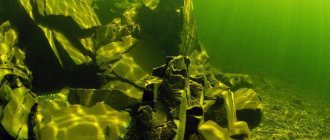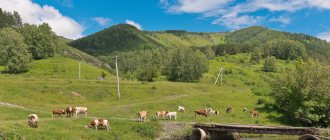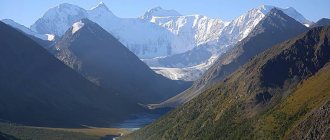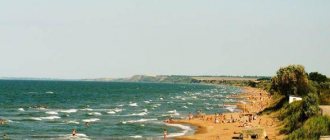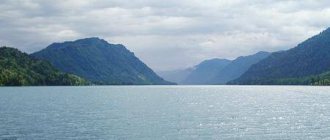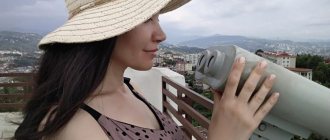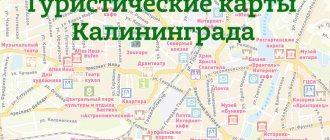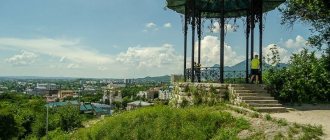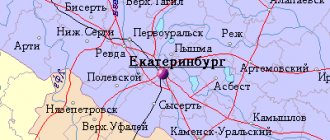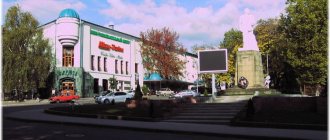| The first day. Walking around the city Day two. Museums and parks Day three. Zelenogradsk and the Curonian Spit Day four. Königsberg Fortress Day five. Svetlogorsk or Yantarny Recommendations and reviews from tourists Where to stay in Kaliningrad |
A trip to Kaliningrad for 5 days is enough to get to know the history and sights in more detail, to visit interesting places that you often don’t have time for on trips of 1–3 days.
The first day. Walking around the city
If this is your first time in Kaliningrad, we recommend walking for the entire first day - walking along traditional tourist routes in the center, looking at the architecture, monuments and popular corners of the city.
Usually, an acquaintance with the city begins in the Fish Village - a tourist quarter on the banks of the Pregolya River, built in 2007 in the style of an ancient half-timbered building. There is a tourist information center, hotels, popular restaurants and an observation tower in the shape of an old lighthouse. This part of the embankment is connected to other areas by pedestrian bridges, one of them - the Honey Bridge - leads to Kant Island .
Fishing village Photo: © Tatyana Kvichanskaya
The old name of the island is Kneiphof; in Prussian times it was an urban area with dense buildings, whose inhabitants were engaged in trade, crafts and shipping. In the Middle Ages, the settlement on the island of Kneiphof had the status of an independent city, which was connected to the neighboring areas of Altstadt and Löbenicht by five bridges. As a result of the bombing of 1944, the buildings on the island were severely destroyed, and subsequently dismantled into bricks and taken to Leningrad for restoration work. Only the badly damaged building of the Königsberg Cathedral , built in the 20th century, has survived. In 1998, the temple was restored, and a magnificent example of the “Northern Brick Gothic” architectural style became the hallmark and symbol of Kaliningrad.
Koenigsberg Cathedral Photo: © Anna Kudryavtseva
Currently, the cathedral is used as an organ concert hall; it houses the largest complex of large and small organs in Russia. Organists from many countries around the world come to festivals and concerts in the hall of the Cathedral. During the daytime, daily organ mini-concerts are held for listeners; their schedule, as well as the cathedral’s tour poster, can be viewed on the official website.
DetailsPoster of the Cathedral
The cathedral is also famous for the Immanuel Kant Museum and his memorial burial. The biography of the outstanding philosopher is connected with Königsberg and the Albertina University of Königsberg, where the founder of German classical philosophy worked as a professor. You can walk around the island around the cathedral in the Sculpture Park , created from the works of Soviet sculptors of the second half of the twentieth century.
Sculpture Park Photo: © Anna Kudryavtseva
After leaving Kneiphof Island, along one of the central streets of Kaliningrad, Leninsky Prospekt, you can walk to Victory Square. The road will pass through the Central Square, famous for two painful points on the city map - the foundation of the Royal Castle and the giant “abandoned” building - the House of Soviets . The chronicled history of the castle began in 1257, when the construction of a stone fortress began on the lands of the Prussians, captured by the Teutonic knights, under the leadership of the Grand Master of the Teutonic Order, Peppo von Ostern. Over the centuries, Königsberg Castle has survived many sieges; the coronations of the kings of Prussia, Frederick Ⅰ and Wilhelm Ⅰ, were held there. The history of the castle has pages connected with Russia. The royal residence hosted the embassies of Vasily II and Peter the Great. In 1697, in honor of Peter the Great’s “Great Embassy,” the large reception hall in Königsberg Castle was even renamed the Muscovite Hall.
Royal Castle of Koenigsberg Photo: ©
The history of the castle in Soviet times is sad; after military bombing, it stood in a dilapidated state until the end of the 1960s and was gradually torn down into bricks. The remains of the walls were blown up in 1967, and in their place, in the area of the castle moat, the House of Soviets was built. The building in the monumental Soviet style was intended to house the highest party and executive bodies of the Kaliningrad region. The facility, 95% complete, was frozen in 1988; since then it has not been used, and to this day the question of its demolition has not been closed. Over the years, the concrete box, erected on 1,148 concrete piles and a strong reinforced concrete frame, has remained almost unchanged and appears on tourist photographs as a monument to the architecture of “Soviet brutalism” and an example of the destruction of valuable historical objects in favor of the architectural dominants of the communist regime.
House of Soviets Photo: © DK1974
Victory Square , the former trading square of Koenigsberg (Hanseic), the place where many administrative and commercial facilities of Kaliningrad are concentrated. After large-scale work on the occasion of the 750th anniversary of the city, the square acquired a modern look. A Triumphal Column , crowned with an image of the Order of Victory, was installed in the center Cathedral of Christ the Savior and the Chapel of Saints Peter and Fevronia . The architecture of these temple buildings can be seen in the so-called pseudo-Russian style, imitating the ancient Vladimir-Suzdal church architecture.
Temple complex on Victory Square Photo: © Anna Kudryavtseva
The area around Victory Square is famous among tourists; they have created a tradition of making an evening tour of local brewpubs and consistently tasting craft varieties of Kaliningrad beer. The most popular establishments are “Kropotkin” , “Khmel” , “Aunt Fisher” and others, where you can finish the first day of your trip. For a non-alcoholic evening scenario, it’s worth returning to the embankment in Rybnaya Village, where pleasure boats depart from its pier on the Pregola River for evening excursions. From the water you can see beautiful panoramas of the evening city; you can admire the ships at the Historical Fleet Embankment , the Kaliningrad port , views of the Kneiphof Island and the spectacularly illuminated Cathedral.
Panorama of Kaliningrad Photo: © Valentina Pushkareva
Fishing village
Literally a stone's throw from the cathedral there is a quarter called the Fishing Village. There used to be a shopping street here where fish were actually sold. Now there is a picturesque tourist quarter, the buildings of which include hotels, cafes and, most interestingly, a lighthouse.
What's interestnig:
— you can pop into a cozy cafe on the second floor of the lighthouse to drink a mug of good coffee and admire the view; — there is also a wine tasting and an exhibition of paintings; — at the very top of the lighthouse there is a magnificent observation deck, and you can book this place for a romantic evening dinner, for example; — in addition to the lighthouse, you can stroll along the magnificent embankment; — there is a shop of amber products in the block.
Where is
It is a 3-minute walk from Königsberg Cathedral, open the map in a new window.
Second day. Museums and parks
The route plan for the second day is made up of two parts. In the first half of the day there is a busy program of visiting the Museum of the World Ocean, in the afternoon there is relaxation and walks in the parks. A large and varied exhibition of the Museum of the World Ocean is located along the Peter the Great Embankment. The complex includes buildings, outdoor exhibition spaces along the waterfront and museum ships. In addition to the main pavilion with aquariums, collections and scientific instruments for studying the ocean depths, the Museum of the World Ocean has exhibition buildings “Cube of Water” and “Warehouse”, an area with samples of naval weapons and a Be-12 seaplane.
Museum of the World Ocean Photo: © NatalyaNP11
The fishing trawler RST-129, the floating lighthouse "Irbensky", the research vessel "Vityaz", the space communications ship "Cosmonaut Viktor Patsayev" and the diesel-electric submarine B-413 are moored at the pier and are waiting for visitors.
Museum of the World Ocean Photo: © NatalyaNP11
DetailsSchedule of all exhibitions of the Museum of the World Ocean
After visiting the museum, walking through the Victory Memorial Park , you can go to the Central Park of Culture and Leisure or the famous Kaliningrad Zoo . Both parks are popular holiday destinations for citizens and tourists. In Central Park, in addition to the standard set of entertainment, cafes and children's attractions, you can find unusual sculptures and monuments of the past. Created in a free English style as a manor park, Luisenval Park in 1808 became a summer vacation spot for the family of Prussian monarchs, and in 1914 they donated the park to the city. The ancient royal semi-rotunda pavilion has been partially preserved; in memory of Queen Louise, a Lutheran church was built in the park in 1901, and its building now houses the Puppet Theater . On the alleys of Central Park there are monuments to Vysotsky and Baron Munchausen.
Another old Königsberg park is located very close by - the Kaliningrad Zoo. It is considered one of the largest and oldest in the country. On the territory of the zoo, several ancient buildings have survived, dating back to the creation of the park in 1896. On a tour of the zoo, you can hear amazing stories about the fate of its inhabitants, for example, about the hippopotamus Hans, who was wounded during the storming of the city and known thanks to the notes of livestock specialist Polonsky “The History of Treatment of the Hippopotamus” in 1945. The Kaliningrad Zoo is home to 350 species of animals; it is also an arboretum; rare plants, exotic trees and shrubs are planted here.
Map of the zoo Photo: © Maria Vasilkova
If the weather is not conducive to long walks in the open air, instead of parks in the afternoon you can visit the Kaliningrad History and Art Museum or its branch "Bunker" . In the restored historical building of the Stadthalle on the shore of the Lower (Castle) Pond at st. Clinical, 21 there are exhibitions dedicated to the nature and history of the region. The museum's halls display extensive geological, zoological, archaeological, historical and artistic collections. The museum is open daily except Mondays from 10.00 to 18.00. The “Bunker” branch of the Historical and Art Museum is located in a real underground bomb shelter from the Second World War. The exhibition tells the story of the surrender of Königsberg, signed by the city commandant General Otto Lyash on April 9, 1945.
Bunker Museum Photo: © Lene
In the evening, we recommend going to Exchange Square and looking at the Singing Fountain . This is a relatively new attraction in Kaliningrad, which uses laser projections, LED lighting and electronic control. The unique fountain raises jets of water to a height of up to 16 m directly from the ground. They form changing three-dimensional shapes, and laser images are displayed on a wall of water. The water extravaganza is accompanied by music.
Google panorama of the Singing Fountain in Birzhevoy Square in Kaliningrad
Historical places
House of Kant
Address: st. Zelenaya, 23, Veselovka village Telephone: Coordinates: 54.590282, 22.032166 How to get from Kaliningrad: 105 km to Veselovka village in the direction of Chernyakhovsk
The philosopher I. Kant lived and worked as a teacher in this house in the 18th century. The house contains exhibits telling about the life and works of the philosopher.
The restorers managed to recreate the interior of the living quarters and the smokehouse.
Castle Saken (Schaaken)
Address: st. Central, Nekrasovo village Telephone: Opening hours: 10.00-18.00 Coordinates: 54.590282, 22.032166 Ticket price: from 150 rubles Website: https://www.schaaken.ru/ How to get there: 40 km by car or bus to Nekrasovo village
The castle is located 40 km from Kaliningrad. It was first mentioned in the Order Chronicles in the 13th century. After the expulsion of the owner, the Order garrison was stationed there. Its goal was to defend the coast of the Curonian Lagoon.
A craft town gradually grew around the castle, and a church was built. Today the names of 21 order knights are known, who ruled the castle at different times. Peter I stayed here several times with Catherine.
By the beginning of the 20th century. Shaaken was partially destroyed. Today, on its territory, tourists participate in knightly competitions, watch fire shows, ride horses, etc.
Insterburg Castle
Address: Chernyakhovsk Opening hours: 10.00-20.00, closed on Monday Telephone: Coordinates: 54.640296, 21.806149 How to get there: 90 km by car or bus to Chernyakhovsk
Knight's castle 14th century. named after the city of Insterburg (Chernyakhovsk), in which it is located. It was built by the Master of the Teutonic Order as a defensive structure on the route of the Lithuanian troops and the bastion. The building is made of natural stone and medieval baked brick. Defensive walls with watchtowers extend from the central part of the castle.
The castle is badly damaged. Tourists come here to see visiting museum compositions and take part in art festivals.
Brandenburg Castle
Address: Ushakovo village, st. Pobeda, 1a Phone: 8-950-67-67-355 Ticket price: from 50 rubles Coordinates: 54.614766, 20.248678 How to get there: 25 km by car or by bus to Ushakovo
Currently, the castle is the ruins of once powerful walls with ceilings. The castle was built as a defensive structure during the time of the Teutonic Order in the town of Brandenburg (Ushakovo village) on the shore of the bay. In the 15th-17th centuries. in this place there was a large settlement, numbering several dozen households, and taverns.
The castle was badly damaged during the Second World War. In summer, theatrical performances are held on site.
Ragnit Castle
Address: Neman, st. Pobedy, 47 Coordinates: 55.039365, 22.030005 How to get there: 130 km by car or bus to Neman
The ruins of the Ragnit castle are located in the city of Neman (until 1947 Ragnit). This is the largest and one of the oldest castles in the region - 13th century.
It served as an outpost in the north of the Teutonic Order. Over the several centuries of its history, the castle burned several times and experienced numerous sieges. At different times it served as a citadel, a court, and a prison.
The castle needs restoration.
Gross-Wonsdorf
Address: Kurortnoye village Coordinates: 54.468387, 21.123463 How to get there: 65 km from Kaliningrad in the direction of Pravdinsk, then 3 km in the direction of Lugovoe village
The settlement was first mentioned in historical documents in 1256. Until 1928, the village was called Gross-Wonsdorf, and until 1950 - Wonsdorf. Now it is called Kurortnoe village.
The castle was founded by the order in the 14th century. for defense. A dam was erected next to it and a mill was built.
From the 18th century until 1945, the castle belonged to the von Schrötter family. Members of the respected family held the positions of ministers and chancellors of the Kingdom of Prussia. I. Kant was a great friend of the family; he often visited the castle.
Today, the ruins of the gate tower, small fragments of walls and the remains of the fortress rampart have been preserved. The park on the site of the forburg is neglected, the entire area is overgrown with trees and bushes. The stable building of the von Schrötter estate is the best preserved building. The castle needs restoration.
Day three. Zelenogradsk and the Curonian Spit
The resort town of Zelenogradsk - the old German name is Kranz - began receiving vacationers back in 1816. Resort life only stopped here during the First and Second World Wars. The balneological resort in Zelenogradsk has federal status. Vacationers come to boarding houses and sanatoriums, and summer health camps operate for children. Mineral water "Zelenogradskaya" is known throughout the country and is exported.
Zelenogradsk Photo: © Tatyana Kvichanskaya
The city is interesting for its old buildings, original urban sculptures and graffiti dedicated to cats. The small private museum “Murarium” in an ancient water tower is also dedicated to them. It is worth a look at the Zelenograd Museum of Local Lore . In it you can learn the history of the settlement of these places, which began in the Stone Age. Archaeological finds from Roman times, traces of Viking settlements and ruins of castles of the Teutonic Order have been discovered here.
Cats of Zelenogradsk Photo: © Tatyana Kvichanskaya
The Curonian Spit National Park begins from Zelenogradsk . The thin strip of land separating the Curonian Lagoon from the Baltic Sea stretches in an arc for almost 100 kilometers. Unique seascapes with sand dunes and forest are carefully protected on the Russian and Lithuanian halves of the spit. In the protected area, people are allowed to move only on special wooden flooring, so as not to harm forest and dune soils. The reserve is home to badgers, foxes, beavers, hares, raccoon dogs, and you can see moose, roe deer and wild boars. 262 species of nesting and migratory birds were counted on the Curonian Spit. During the migration season, millions of migratory birds fly along the spit; it is no coincidence that one of the oldest ornithological stations is located here - Fringilla , established in 1901. Compared to resort beaches, the sparsely populated and spacious coastline of the Curonian Spit gives a feeling of freedom and contact with nature.
Curonian Spit Photo: © Andrey Muravyov
Monuments
List of famous monuments that may be of interest to tourists, with a brief description:
- The monument to Duke Albrecht was erected in 1891 next to the Cathedral.
- Monument to soldiers - internationalists. Located in Yunost Park. It was opened in 1998.
- The monument to Hermann Klaass was built in 1913. Dedicated to the founder of the zoo.
- Monument to Julius Rupp. Dedicated to a rebellious preacher who renounced the church and opened an evangelical community.
- The monument to Peter I is located at the headquarters of the Baltic Fleet. Dedicated to the founder of the Russian fleet.
- Monument to M.I. Kalinin, after whom the city was named, was created in 1946.
Day four. Königsberg Fortress
We recommend spending the fourth day in Kaliningrad again and devoting it to getting to know the defensive system of the fortified city of Koenigsberg. The first fortifications appeared here in the 20th century, when ramparts were poured, ditches were dug and stone walls with gates were built. Over the centuries, the defense system was constantly improved, ravelins were built, and in the 20th century, the Friedrichsburg Fortress was built to cover the city from the sea, of which only the Friedrichsburg Gate on Portovaya Street has survived.
Friedrichsburg Gate Photo: © Masha Malinovskaya
The main defense ring of the city, called the “Night Feather Bed of Königsberg,” was built over the course of the 20th century. It included 8 city gates, the Crown Prince barracks, towers, bastions and 12 forts surrounding the city. The remains of unique fortifications in varying states of preservation can be seen throughout the city. Some city gates have been restored and house museum and exhibition displays. These are the Royal , Brandenburg , Sackheim , Friedland Gates .
Brandenburg Gate Photo: © vladkonst
In the first half of the day, it is worth going to the museum of Fort No. 5 “King Frederick William III” . You can get inside the powerful bastion, examine the premises of the barracks, infirmary, canteen, weapons depots, various shelters and mines. In the open area near the bastion there are samples of military equipment from the Second World War.
Fort No. 5 Photo: © Andrey Muravyov
The second part of the trip includes another set of historical sites, which are located in the area of Lake Superior (in German “Oberteich”). From Fort No. 5 you can get there by bus No. 31 to the Marshal Vasilevsky Square stop. On Lake Upper, in addition to the remains of the Oberteich and Grolman , you can see the Lithuanian Wall and Ditch, the Kronprinz barracks , the Don , Wrangel and the Rossgarten Gate . In the Don Tower there is the Kaliningrad Amber Museum , with educational collections and unique samples of sunstone, artistic products of old and modern masters. Near the museum there are many outlets selling amber souvenirs and jewelry.
Amber Museum in the Don Tower Photo: © Alexey Panin
If you still have some energy left after a day of walking through historical places, you can go for a walk along the evening streets of Kaliningrad. It’s nice to walk along the illuminated embankments and bridges in the city center, look at the reflection of the evening lights in the Pregola River, look at the numerous city sculptures, or just sit on Immanuel Kant’s bench.
Fishing village
The “Fish Village” will be a very interesting place to visit for tourists. Opened not so long ago - only nine years ago, this village is quite an interesting Kaliningrad attraction.
The complex consists of fourteen objects. The basis of the complex is the restored appearance of ancient Königsberg. The complex is represented by a variety of Gothic towers and authentic fish market architecture. Everything here - even small details - corresponds to past eras. In these places, tourists love to take photographs for memory.
There is also a river bridge across the river, famous for its history. Nowadays the bridge is a pedestrian bridge and is considered the most romantic place in the city.
Boat rides are organized along Pregol. Riding along the river, one way or another, you become saturated with the spirit of the past Prussian city. And if you climb the Mayak tower, which is located here, you can see the panoramic beauty of the city.
Day five. Svetlogorsk or Yantarny
On the fifth day, you can go to the sea again and get acquainted with the famous resort of the Kaliningrad region - Svetlogorsk. Researchers date the resort history of the city from the beginning of the 20th century, when it became fashionable in Europe to go to the sea coast to relax and swim. Wealthy citizens from different countries and members of monarchical families began to come to Rauschen, as Svetlogorsk was called in Prussian times. Dachas, boarding houses and hotels were built in Raushen; by the beginning of the 20th century, a railway was laid here and a hydropathic clinic was built, in memory of which a water tower - the symbol of Svetlogorsk. During the war, the city was not heavily shelled; most of the buildings survived. Now in Svetlogorsk there are 120 architectural monuments, there are mud clinics and a pump room with mineral water, a beautiful promenade has been built along the shore, and many cafes and restaurants.
Svetlogorsk pump room Photo: © kandidat
It’s nice to walk around Svetlogorsk at any time of the year, but the Svetlogorsk beach is inferior to the beaches of Zelenogradsk and the village of Yantarny. Therefore, in the summer season, those who want to swim in the Baltic Sea and sunbathe are better off going to Yantarny.
The village of Palmniken received the name Yantarny in 1947. The world's largest amber quarry is located here. Yantarny Beach is especially popular among tourists . Here is the widest sandy coastline in the entire Kaliningrad region. Equipment and infrastructure on shore provide the highest level of service. In 2016, Amber Beach received the Blue Flag rating. In Russia this is the only beach with such a high international rating.
Yantarny Beach Photo: © Tatyana Kvichanskaya
On an independent trip to the seaside resorts of the Kaliningrad region, you can go by rented car or public transport; buses and trains go there regularly. It is more convenient to go on such trips accompanied by a guide or on a tour. Kaliningrad guides offer a wide range of programs, from individual tours on foot or by car to bus excursions.
DetailsAll excursions from professional guides in Kaliningrad
Recommendations and reviews from tourists
Before traveling, you should arm yourself with knowledge that tourists willingly share in their reviews and photo reports, talking about their trips to the westernmost region of Russia:
- Advice from Oleg Ivanov “How to spend three days in the Kaliningrad region and remember them for life”
- Review by Anastasia Simanovskaya “Is it worth spending your vacation in Kaliningrad?”
- Olga's story “Russian Germany or German Russia”
- Report “Kaliningrad - five evenings and days”, written by Oleg Zhuravel
- Stories by Vera Polonskaya about Kaliningrad “And you, Stirlitz, I will ask you to stay!”, about Svetlogorsk “Rauschen - the city of marzipan castles”, about Zelenogradsk “Cats in Kranz”.
DetailsAll tourist reviews about Kaliningrad
We recommend a detailed Guide to Kaliningrad from Tourist and tips for the seasons:
- What to see in Kaliningrad in summer
- What to see in Kaliningrad in winter
- What to see in Kaliningrad in spring
- What to see in Kaliningrad in autumn
Victory Square Photo: © Katerina Solosyatova
Vishtynets Lake
Vishtynetskoe Lake (often called the European Baikal) is another beautiful place in the Kaliningrad region, which will be appreciated by nature and fishing lovers. This is the largest, deepest (maximum depth - 54 meters) and cleanest lake in the region, its shores are covered with forests, and there are many sandy beaches. The lake is located in the eastern part of the region, on the border with Lithuania, 170 kilometers from Kaliningrad. Part of the lake belongs to Lithuania.
On Lake Vishtynetskoye there are camp sites where you can rent a boat or motorboat.
Where to stay in Kaliningrad
Thanks to its uniqueness, rich history and proximity to the Baltic Sea, Kaliningrad has become a popular option for a weekend or vacation. But don’t look for hotels on the seashore in Kaliningrad itself - they are not here, because the city is not on the coast itself. The resort towns of Zelenogradsk, Svetlogorsk and small villages are located by the sea. In any case, when staying in Kaliningrad, they can be easily reached in half an hour or an hour, even by public transport, and vice versa.
For guests of Kaliningrad there are hotels up to 5 stars and many apartments, cozy villas and stylish hostels. Here you can live in the guest cabins of the Vityaz ship, which has become a museum exhibit, or in the Kaiserhof and At the Honey Bridge hotels, stylized as an antique Fishing Village. The appearance of the Mercure Kaliningrad or Holiday Inn will support the atmosphere of gingerbread northern Europe, and RiverSide will delight those who come to the city in the summer with an outdoor swimming pool.
- Kaliningrad hotels
- Hostels for Budget Travelers
- Flats and apartments
More thematic selections in special reviews of Tourister.Ru:
- Hotels in Kaliningrad and the region by the sea
- Hotels in Kaliningrad and the Kaliningrad region for celebrating the New Year
One way to save on travel is to book accommodation on Booking.com with cashback Cashback promotion on Tourist. RU
quiet lake
In the resort town of Svetlogorsk there is a picturesque place - Quiet Lake, where ducks and swans live. The lake is surrounded by forest. On the embankment there are benches, a bicycle path, and exercise equipment. You can rent a boat or catamaran and ride around the lake; there is a bicycle rental service.
